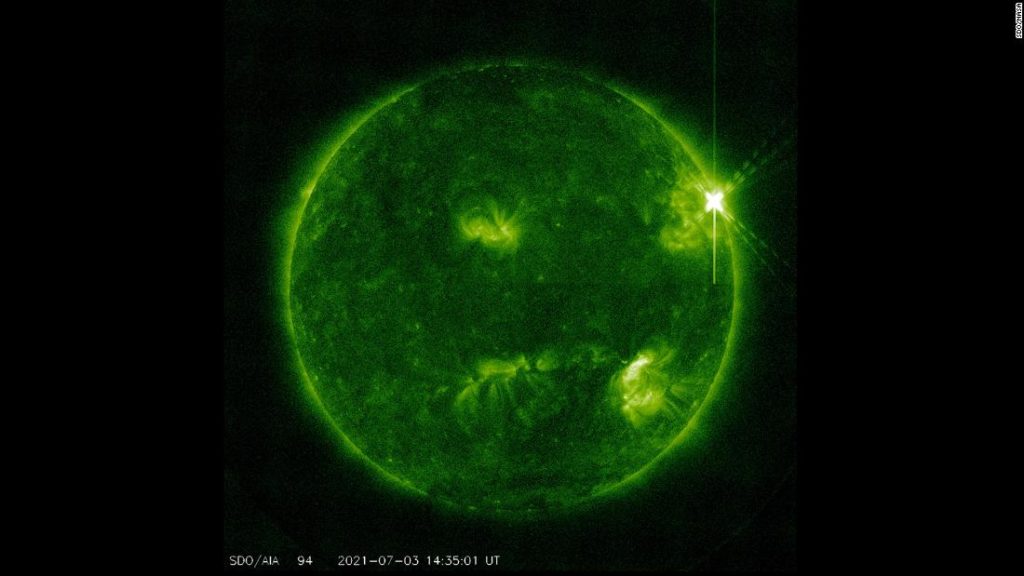Researchers at the center measure the intensities of solar flares on a scale, with A-class flares being the smallest and X-class flares being the largest. The scientists classified the July 3 flare as an X1, which is the largest category of solar flares.
Solar flares are large eruptions of radiation on the surface of the sun, said Bill Murtagh, program coordinator at the US SWPC.
“We’re talking the energy equivalent of millions of 100-megaton hydrogen bombs exploding at the same time,” Murtagh said.
Such a huge release of energy can be felt here on Earth, 93 million miles away, he noted.
Solar flares are considered part of “space weather,” the conditions affecting the space around Earth that are usually caused by the sun. Flares are sometimes accompanied by coronal mass ejections, magnetic plasma bubbles that can reach Earth.
If that energy makes its way here, it can affect high frequency communication and on rare occasions, global positioning systems (GPS) and satellites, Murtagh said.
The sun goes through an 11-year solar cycle where the flare activity level fluctuates.
Cycle 25 began in December 2019 with a solar minimum — a period when the sun is still active, but it’s quieter and has fewer sunspots.
The activity will slowly increase and reach a solar maximum — a time when there are a large number of sunspots — in July 2025.
A total solar eclipse will cross North America in April 2024, which may offer scientists the opportunity to observe the sun’s activity, like solar eruptions or sunspots, during the event.
“We hope that an eclipse close to solar maximum will not only show us an awe-inspiring corona, but also some big, interesting sunspots on the face of the Sun to help us learn about living inside the atmosphere of an active star and the space weather it creates,” said Valentin Martinez Pillet, director of the National Solar Observatory in Boulder, Colorado, in a statement.
In a typical solar cycle, Murtagh said researchers typically see about 150 flares that reach the intensity of the July 3 flare. But there could be around 1,500 smaller flares in the same period, he added.
In the days following the solar flare, the location of the flare disappeared from Earth’s view as the sun rotated, Murtagh said.
The flare’s location will come into view again in two weeks, but he noted the US SWPC is continuing to monitor the eruptions on the other side of the sun during this time.
When the solar flare is facing away from the Earth, the increased energy emissions cannot affect our planet, he said.
“These sunspot groups can persist for weeks or even months, so we want to see if it returns two weeks later,” Murtagh said.
You may also like
-
Afghanistan: Civilian casualties hit record high amid US withdrawal, UN says
-
How Taiwan is trying to defend against a cyber ‘World War III’
-
Pandemic travel news this week: Quarantine escapes and airplane disguises
-
Why would anyone trust Brexit Britain again?
-
Black fungus: A second crisis is killing survivors of India’s worst Covid wave

